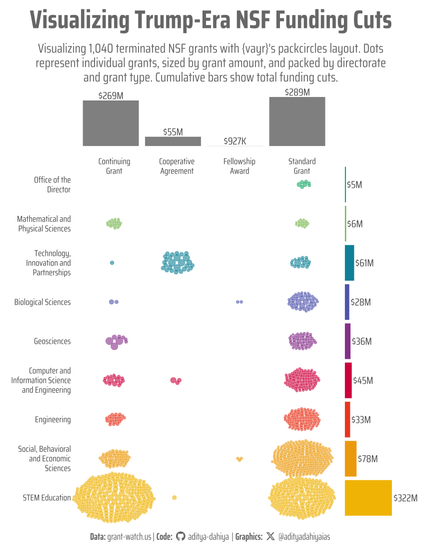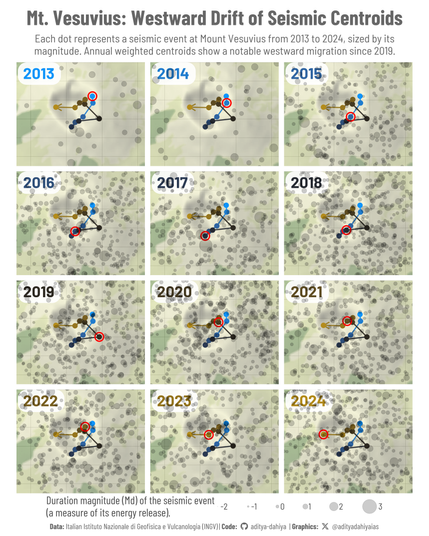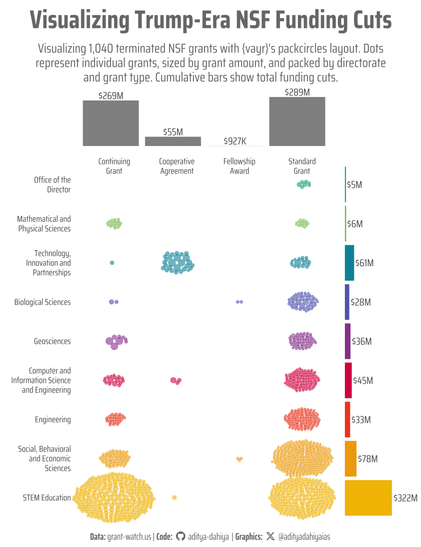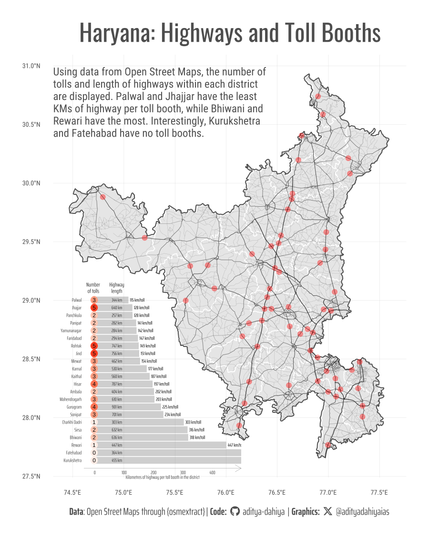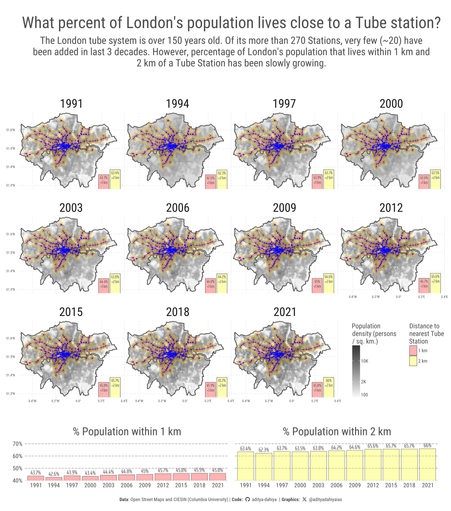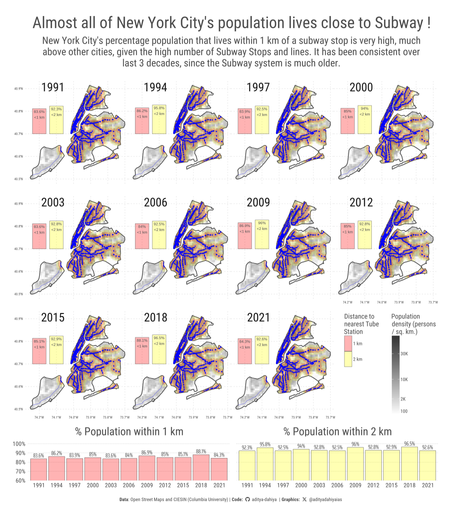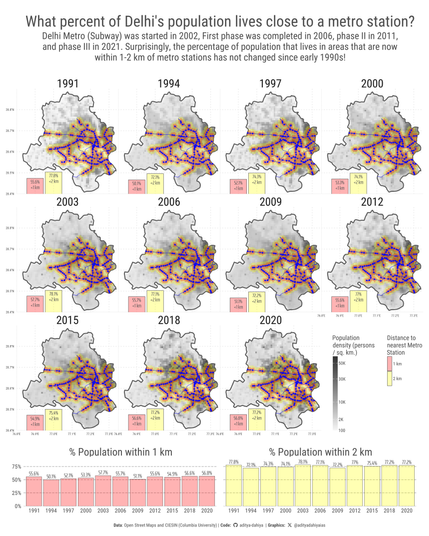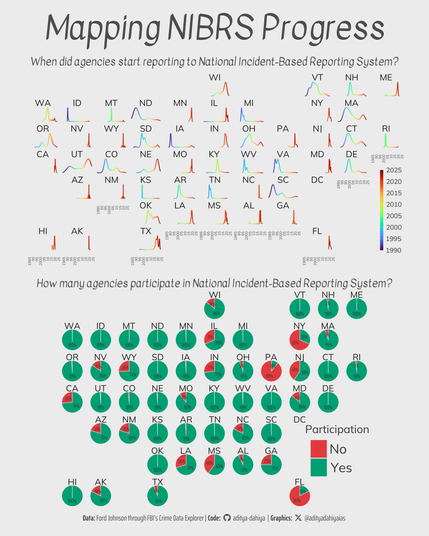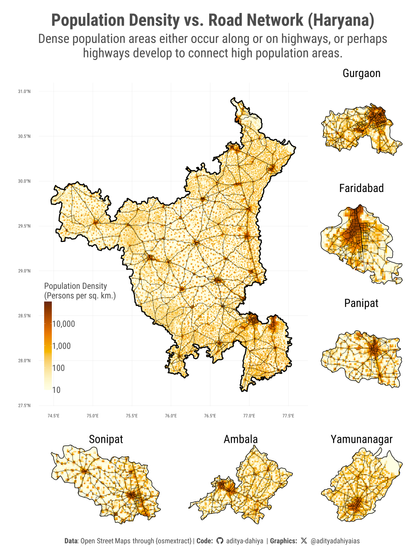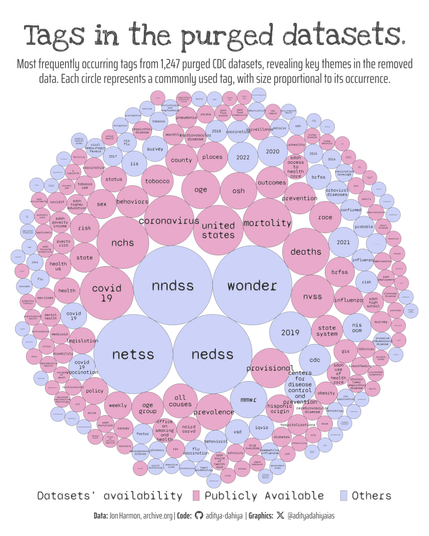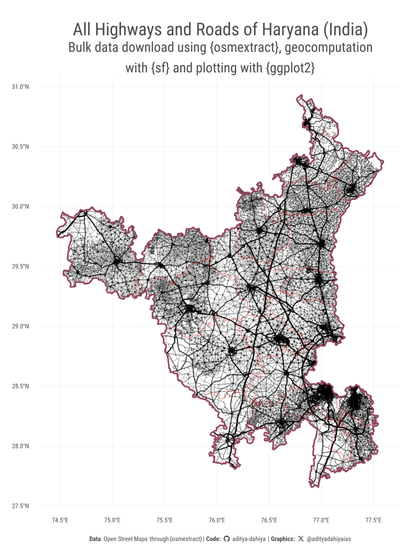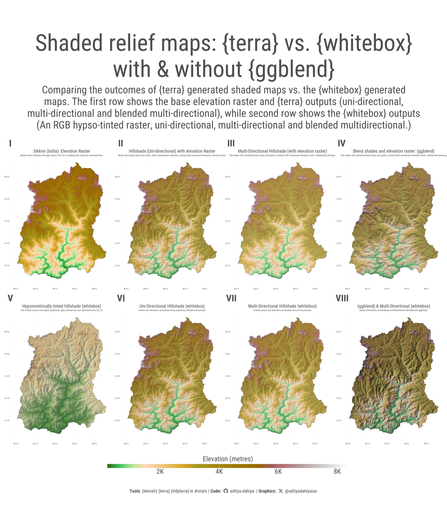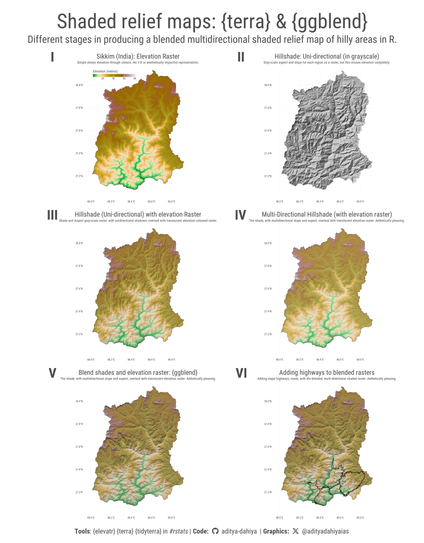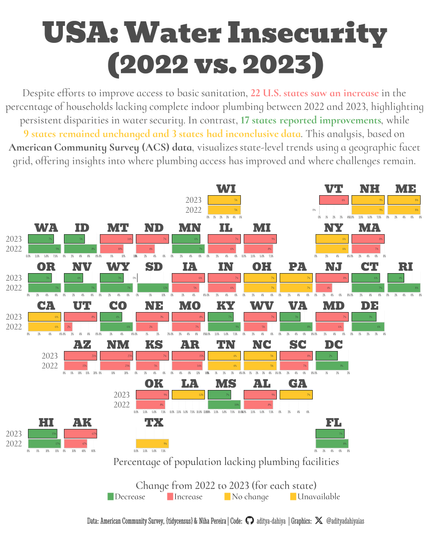#TidyTuesday Visualizing terminated NSF grants with {vayr} and {packcircles} algorithmic layout! 📊STEM Education hit hardest.
Code 🔗 https://tinyurl.com/tidy-nsf-grants
Data: https://grant-watch.us (@GrantWatch)
Tools #rstats #ggplot2 #vayr by Alex Coppock at https://alexandercoppock.com/vayr/index.html
Data Viz enthusiast. Study Health financing. Harvard, Fulbright and AIIMS alumnus. IAS.
Views are mine!
#TidyTuesday 🗺️ Earthquakes at Mt. Vesuvius (2013–2024): Since 2019, they're shifting westward (annual weighted centroids).
Data: @INGV_press @libbyheeren.bsky.social
Full Code 🔗 https://tinyurl.com/tidy-mt-vesuvius
Made with #rstats {ggplot2} {ggmap} {terra}
#dataviz #ggplot2
#TidyTuesday Visualizing terminated NSF grants with {vayr} and {packcircles} algorithmic layout! 📊STEM Education hit hardest.
Code 🔗 https://tinyurl.com/tidy-nsf-grants
Data: https://grant-watch.us
Tools #rstats #ggplot2 #vayr by @aecoppock.bsky.social at https://alexandercoppock.com/vayr/index.html
#TidyTuesday Mapping Long Beach animal rescues with pie charts at district centroids with base raster maps of {ggmap}, {terra}, {sf}, {scatterpie} & {tidyterra} by @dhernangomez
Data: City of Long Beach
Code 🔗https://tinyurl.com/tidy-longbeach
#RStats #ggplot2
@steffilazerte Thanks. Surely, I will add them.
#DataViz How to use geo-computation with #Rstats, {sf} & {osmextract} to compute highway lengths and toll booths within geographic subdivisions. Then, plotting a composite plot with {patchwork}.
Data: @openstreetmap
Full Code 🔗https://tinyurl.com/hy-toll-hwy
Inspiration: #geocompx by @robinlovelace & @nowosad
London’s Tube & Urban Density! 🇬🇧
🔹More Londoners now live near Tube stations—even with only few new stations in 30 years!
🔹Densification, not expansion, is driving increased access.
🔹 Unlike others, London’s Tube (150+ years old) shaped the city, not the other way around
#DataViz 🚇 NYC’s Subway = Unmatched Coverage!
🔹85% of NYC’s population lives within 1 km of a subway stop.
🔹95% lives within 2 km!
Data: CIESIN @openstreetmap
Full code🔗 https://tinyurl.com/nyc-pop-sbwy
Inspiration #geocompx by @robinlovelace & @nowosad using #rstats #ggplot2
Did the Delhi Metro🚇lead to a rise in population density around stations? It connects already densely populated areas rather than driving new growth. 📊
Data: CIESIN @openstreetmap
Full Code: https://tinyurl.com/del-pop-metro
#DataVisualization with #rstats; #DelhiMetro #UrbanPlanning
#TidyTuesday NIBRS adoption across the U.S.'s states. A creative hack to apply continuous color scales🎨 in geom_density(), and geographically arranged layouts using {geofacet}.
Full Code🔗https://tinyurl.com/tidy-fbi-nibrs
Tools: #rstats, #ggplot2, #geofacet
#OpenData
@nowosad Thank you for noticing. Much appreciated.
#OpenSource data and #R code for plotting Correlation between highways and densely-populated areas, globally. Example of Haryana (India).
Data: @openstreetmap @nasa
Full Code🔗https://tinyurl.com/hy-pop-roads
Tools: #rstats, #ggplot2, #tidyterra, #osmextract by @rOpenSci
#Maps #OpenSource code to plot correlation between changes in population density (in last 3 decades) and road network, e.g. #Delhi (#India)
Data: @openstreetmap @nasa
Full Code🔗https://tinyurl.com/delhi-pop-roads
Tools: #rstats #ggplot2 #tidyterra #osmextract by @rOpenSci
#TidyTuesday What themes were most common in the purged CDC datasets? A packed circles' visualization.
Data: @jonthegeek @internetarchive @waybackmachine
Code 🔗 https://tinyurl.com/tidy-cdc
Tools: #rstats, #ggplot2, #packcircles by @davidgohel
#DataViz #PublicHealth
#DataVisualization #Maps A basic use for {osmextract} - quickly and easily plotting complete road network of any place in the world - example from Haryana (India).
Data: @openstreetmap
Full Code 🔗 https://tinyurl.com/osmextract-hy-roads
Tools: #ggplot2, #osmextract by @rOpenSci, #sf
#TidyTuesday The #Simpsons' episodes: Viewership vs. #IMDb ratings as a scatter-plot with bivariate colour scale.
Data: @kaggle Todd Schneider
Code 🔗 https://tinyurl.com/tidy-simpsons
Tools #rstats #ggplot2 #magick {biscale}
#dataviz #maps Code experimenting with package {hillshader} by @pierreroudier - a wrapper around #rayshader - quick code to plot hilly regions in #rstats
Full Code🔗https://tinyurl.com/hill-sikkim
Tools: #ggplot2 #terra #tidyterra by @dhernangomez #elevatr by USEPA
#TidyTuesday Displaying geographic patterns in facet graphs with {geofacet} - change in water insecurity in USA's states (2022 vs 2023).
Data: {tidycensus} @nnpereira.bsky.social
Full Code🔗 https://tinyurl.com/tidy-plumbing
Tools #rstats #ggplot2 #geofacet by Ryan Hafen
